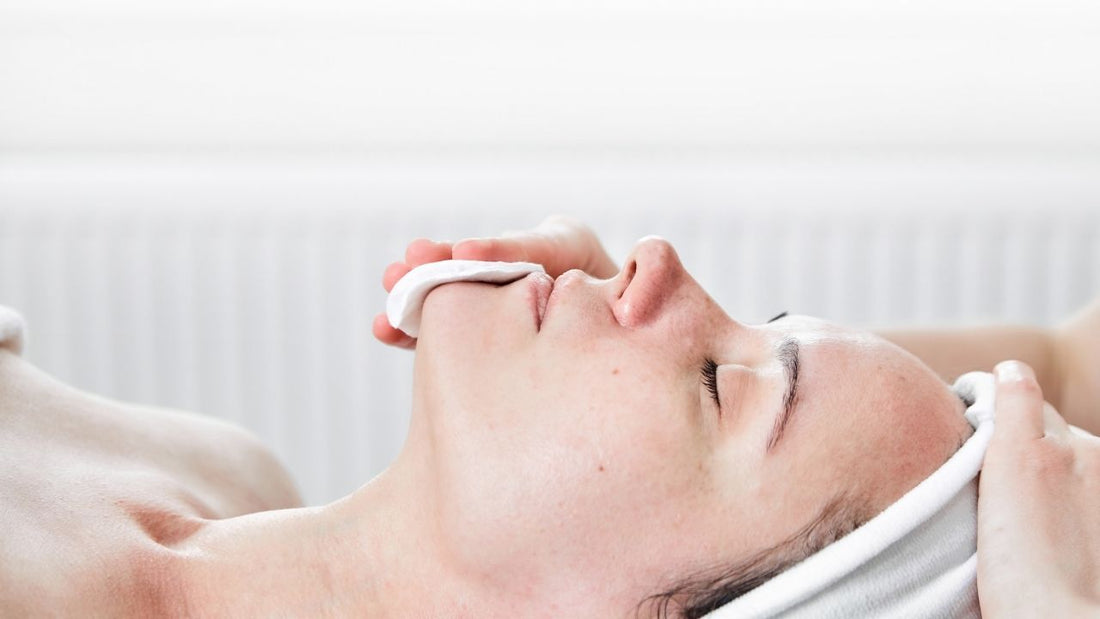
Is Dermaplaning Good For Skin?
Share
Dermaplaning has recently been sweeping the internet by storm. Whether it be because of clickbait YouTube videos, or ASMR TikTok uploads, there is no denying the exceptionality of the procedure. But what even is dermaplaning? Is it simply just scraping off dead cells from your face? Not at all!
Dermaplaning is much more detailed than just a simple procedure where dead skin cells are removed from the surface of the face. This usually involves the use of a small blade to scrape off the outermost layer of dead skin cells.
This process can help stimulate the production of new healthy cells and rejuvenate the skin. The procedure was created for people who have excessive hair growth on their face or body, but it has become increasingly popular to use this for skincare.
There are also countless benefits to dermaplaning, such as reduced acne, improved complexion, and reduced oily skin.
The benefits of dermaplaning are better skin, so much so that the procedure is now gaining popularity as a beauty treatment. It does not require anesthesia or downtime. Usually, the process only takes about 30 minutes to be completed.
Other advantages to dermaplaning occasionally are better skin because it removes peach fuzz, prevents ingrown hairs, and reduces fine lines caused by shaving. Dermaplaning also provides exfoliation which can help minimize blackheads and breakouts by getting rid of dead skin cells on the surface of your skin. But it is still unclear whether this procedure will reduce wrinkles and improve other effects associated with aging. So, try not to bet on that too much.
However, there are still some disadvantages of dermaplaning. These usually are irritation, redness, or swelling at the site where the procedure was performed. If done correctly, this treatment can help reduce fine lines and wrinkles and improve the appearance of scars, acne, and sun damage.
But it is still important to remember that dermaplaning is not for everyone. It’s important to note that dermaplaning is not as deep as a full facial peel or laser resurfacing treatment. The entire process is very intricate, which can make your skin more sensitive to sunlight and cause it to peel after the treatment. That’s why people with rosacea, acne, or those who are prone to developing keloids should avoid this procedure.
Dermaplaning also requires a skilled professional - a licensed esthetician or cosmetic surgeon with experience in facial hair removal treatments. Some dermatologists recommend dermaplaning as an excellent way to maintain your skin’s youthful appearance. It also helps remove acne-causing bacteria that are found under the surface of the skin, which makes it great for those who are struggling with acne breakouts.
To sum it up, it depends on the individual if he/she is willing to take the risk and get dermaplaning done. However, it is a must to know the pros and cons of the procedure if you are a beginner in the world of skincare in general. On top of that, consult with your dermatologist beforehand, to avoid routines that will cause breakouts or other terrible skin irritations.
To conclude, we can bet that dermaplaning is a healthy skincare routine option for yourself. However, how you will benefit from it depends on your skin type, and irritations present. If you are prone to breakouts all the time, then try to first reduce the inflammations before you check-in for a dermaplaning appointment.
And it is crucial to remember that dermaplaning is not for everyone. This treatment will not work for those who have sensitive or dry skin or those who are allergic to hair removal products like wax, shaving cream, or even tweezers. So if you fall in that category by any chance - no matter how minimal the irritation is - it is better to avoid such long-term procedures in the first place.
